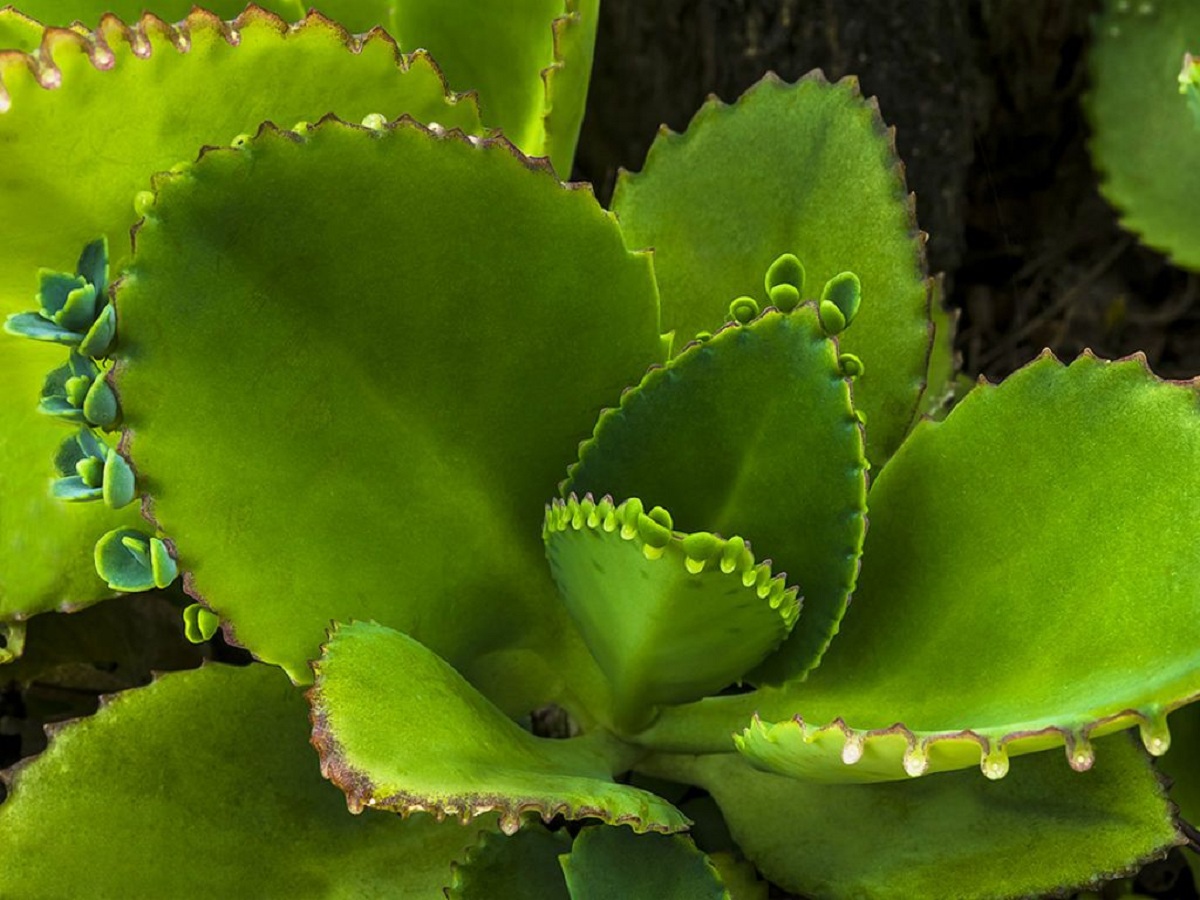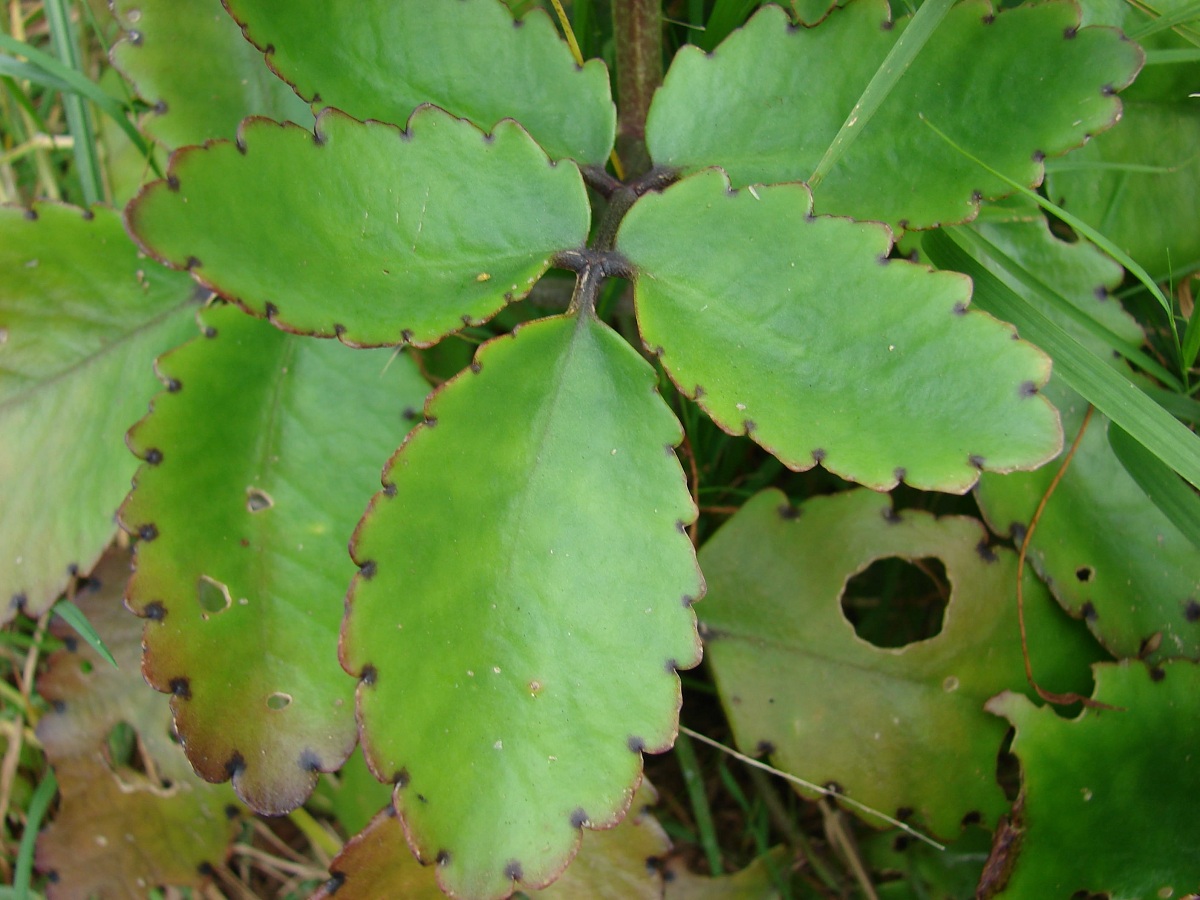
One of the non-cacti fatty or succulent plants for people who do not have much experience is the Kalanchoe. It is a type of plant that has very low maintenance and is undoubtedly recommended for all those people who are starting in the world of gardening. There are numerous species and each one has a unique characteristic such as the color of its leaves, its different colors or its morphology. However, the vast majority of these plants are used to decorate any type of bright corner both indoors and outdoors.
In this article we are going to tell you all the characteristics and care of the Kalanchoe.
Origin and characteristics
These plants are native to the warmest regions of the world. And it is that they have the characteristic of being able to withstand drought by storing water inside. They are mainly found on the African continent and Madagascar. The genus Kalanchoe is made up of about 125 species, most shrubs as perennial herbaceous plants. There are only a few animal or biennial species.
Its main characteristic is that of having fleshy leaves of a medium to dark green color. The leaves are covered by something similar to wax and are set in the form of rosettes. Flower stems emerge from each of the leaves during the winter season in spring. This is because it is the time when they suffer less stress due to high temperatures. Also because they receive the rainfall of the year. The flowers can be red, pink, white, yellow, purple and have no scent. They are very good plants for decoration, but they do not have any odor.
If there is any special distinction of the Kalanchoe it is its tendency to produce suckers on the edges of its leaves. The suckers are nothing more than exact replicas of the plant but in miniature. Once the suckers begin to grow, they develop their own small roots and fall to the ground. If the soil is skinned and meets the necessary conditions, they begin to root and develop. In this way, the survival of the species is ensured since they have a very good multiplication more than by seeds. And the fact is that the seeds need too much time to germinate than the suckers need to grow. The suckers also take advantage of the nutrients of the mother plant itself to grow.
Kalanchoe care

These plants do not need much care, but they do need some minimal care. It is highly recommended for those initiated in the world of gardening who do not have time to dedicate to their plants. However, it is prepared for interior and exterior ornamentation.
We are going to point out what are the minimum care that this plant needs:
- Location: Most of these species should be found in full sun or in very bright areas. There are some species that appreciate the semi-shade, but it is not common.
- Irrigation: irrigation must be very little. Only during the summer season is watered once or twice a week and in very little quantity. The rest of the year you only have to water every fifteen days.
- Fertilizer: In the spring and summer season it is interesting to fertilize a little, fertilizer for cacti and fats. You just have to follow the specifications indicated on the packaging.
- Ground: for the soil substrate it is not demanding at all. It only needs to have good drainage so that the roots do not rot due to excess water. Keep in mind that the soil does not filter the water and allows it to accumulate, the roots can rot.
- Planting or transplanting time: you have to wait for the spring time when the risk of frost has passed. In this way, the plant will not have any problem growing.
Kalanchoe multiplication

It can be done through seeds, cuttings or suckers. If we choose it for seeds, we will have to sow in a seedbed in spring or summer and mix with vermiculite. They must be covered with a thin layer of the substrate and always keep a light humidity. Let's not forget that humidity does not mean that the soil is flooded. These seeds will finish after a month.
If we choose to multiply by stem cuttings, a cutting must be cut in spring or summer and planted in a pot. It can also be placed in a part of the garden, but taking into account that it has enough sunlight. You have to take care of it as if it were a rooted plant, since it will only take a couple of weeks to take root.
If we choose to multiply it by suckers we can separate those of the mother plant when they have their first roots. Once they have been separated they are raised in pots with a small size until they grow. We can use a universal growing substrate to promote its development. It is advisable to cover the roots with some sand from the river. Sometimes the suckers are very small and their planting is a bit difficult.
As for pests and diseases, basically you have to be careful with snails and slugs. These mollusks are your main enemies. Keep them away from the Kalanchoe with some diatomaceous earth. It is necessary to put this earth on the substrate around the plant so that these mollusks do not disturb. It is interesting to place a dose of 30 grams for each liter of water.
Main uses
The Kalanchoe was used mainly for ornamental use. And it is that they are quite beautiful plants that are wonderful plant anywhere. The color of the leaves and the precious flowers make its ornamental value very high. Other species of Kalanchoe can be mixed with each other to favor a good color combination.
It also has other medicinal uses, although many of these species can be toxic. Those plants that are used correctly can help improve health. Many of its sheets can be used for the preparation of external or internal applications. If we want to use an external use are used by making plasters or poultices and for internal use you can prepare infusions with the leaves. They can also be consumed in salads. Among the health benefits we find relief from rheumatism and cough, sedative properties, cuts diarrhea, improves digestion and can be used as a complementary treatment for cancer. Other advantages is that it helps reduce fever and protect the liver.
I hope that with this information you can learn more about the Kalanchoe and its main characteristics.
